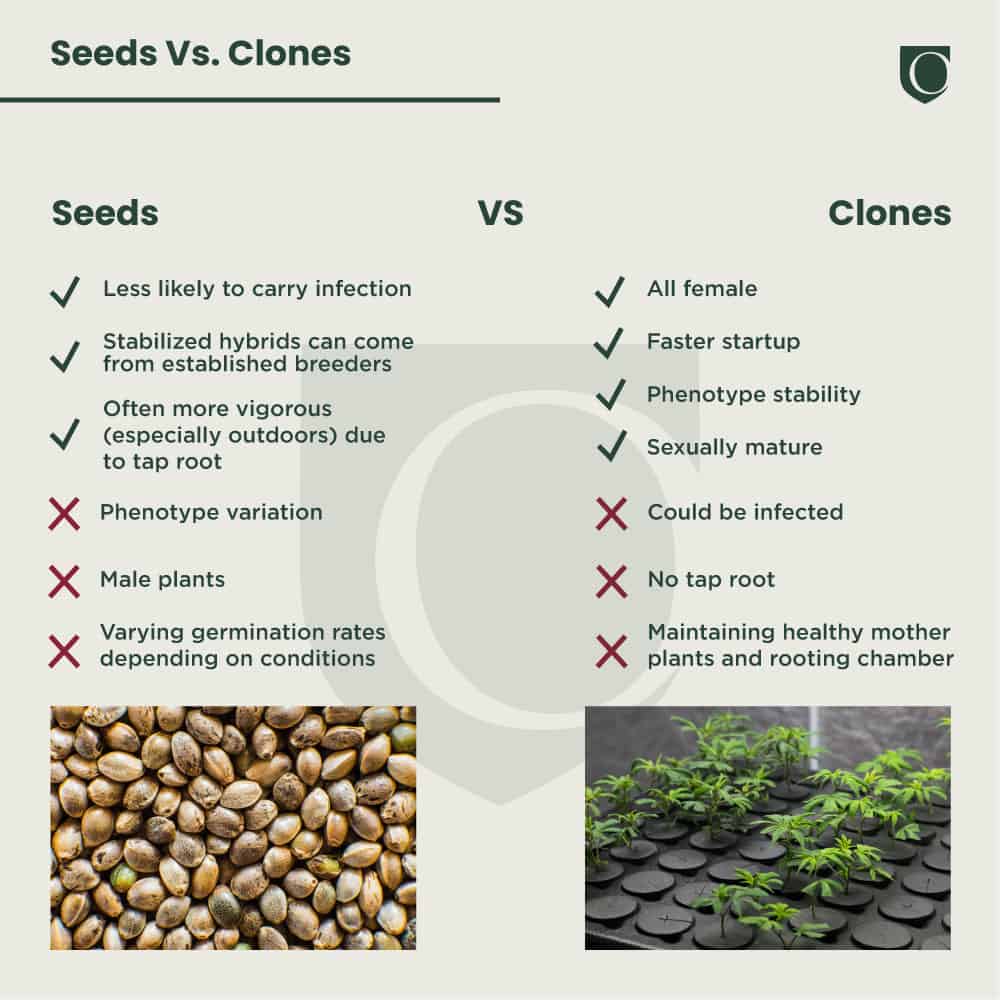
Cultivating cannabis is a rewarding hobby, which is why approximately 6% of consumers in the United States grow their own, and that number continues to rise. The overwhelming majority of home growers— 70% percent — say they grow simply because they enjoy it.
In addition to growing for pleasure, there are other reasons people start personal gardens. According to a recent survey by New Frontiers Data, home growers report that it’s more convenient, less expensive, and higher quality than purchasing cannabis at a dispensary. They also like to ensure their flower is free of pesticides. Thirty-six percent say they grow cultivars they can’t find anywhere else, and 14% report that growing is their only option.
If you want to join the trend and grow your own, it’s essential to start with a plan.
Here are some things to consider to set yourself up for success:
Make a Budget: If saving money is your goal, calculate how much you currently spend on cannabis, then choose a garden design that works within your budget and helps you cut costs.
Growing outdoors is the cheapest option because you can plant directly in the soil and use the sun. Indoor gardens require a larger initial investment but will give you more control and is a better option for people who live in a cold climate or plan to do many cycles. If you’re just starting and have limited space, consider a grow tent that comes with lights, fans, and other necessary equipment.
Choose a Space: If you plan to grow outdoors, observe possible locations throughout the day, and select the area that gets the most consistent sun. You’ll also need to make sure you can efficiently irrigate your garden and keep it safe from animals and pests.
Indoors, the primary consideration is size.
Privacy and odor mitigation are factors indoors and out, so consider how your garden will impact your family, neighbors, and guests.

Select Genetics: An exciting aspect of growing your own cannabis is that you can cultivate any variety you can get access to. Factors like location, light source, and schedule all come into play when choosing a variety. Ruderalis can be an excellent choice for outdoor gardens because it grows quickly and you can turn a lot of crops in mild climates. Indoors, you will want to avoid sativas because they grow too tall, while in a tent, you’ll want small plants that grow densely and finish quickly.
You’ll also have to decide between starting from seeds or clones. Beginners will likely have more success with clones because they are faster to start and guaranteed to be female. If you start from seeds, you’ll need to pay close attention to root out males before they pollinate females — and potentially neighbors’ nearby gardens.
Pick Your Medium: Many people think soil is associated with better quality, while others swear by hydroponics. There are benefits and drawbacks to each. Soil is free in your backyard, and bagged potting soil is inexpensive and readily available. However, it’s messy, and you won’t have as much control over the nutrient balance your plants receive. Hydroponics is cleaner, and you can experiment with nutrients to maximize your yields, but it requires more skill, knowledge and perhaps a more high-tech system to ensure your plants are getting what they need. As you plan, look into the various mediums available and decide what’s right for you.
Find a Friend: Everyone needs a source of quality information for cannabis cultivation. There are many online resources, but how will you know what is credible? It is helpful to have someone in real life to consult. Is there an experienced grower in your social circle who can help you achieve your goals? It might be an acquaintance or professional at your local hydroponics store. Many schools and colleges, like Oaksterdam University, offer classes taught by seasoned professionals who can help you avoid costly mistakes. Every Friday, Oaksterdam also hosts a free plant talk on Clubhouse, where cannabis horticulturists answer questions in real-time. Another great resource is the Cannabis Growers Handbook by Ed Rosenthal, Dr. Robert Flannery and Angela Bacca.
Growing cannabis can be extremely rewarding. Plants require lots of nurturing and troubleshooting, and it can be costly and time-consuming to grow your own. Careful planning can help avoid problems and set you up for success.

